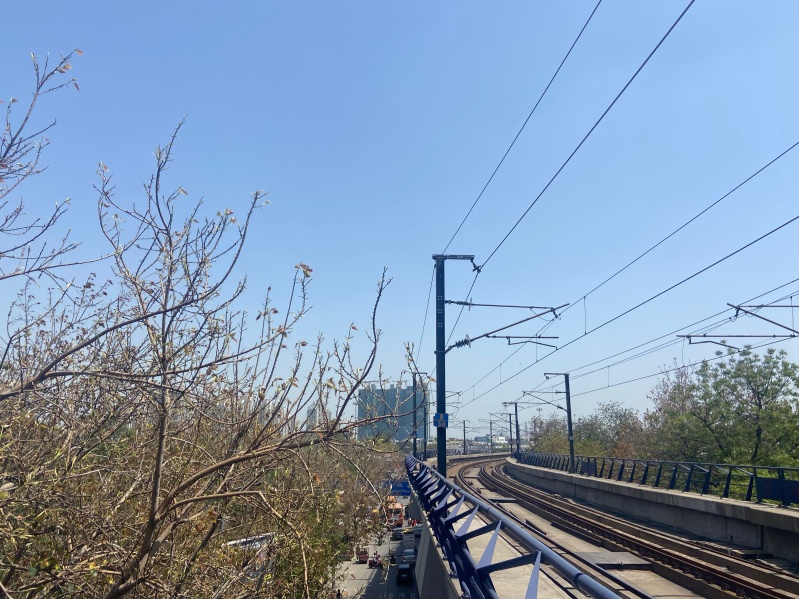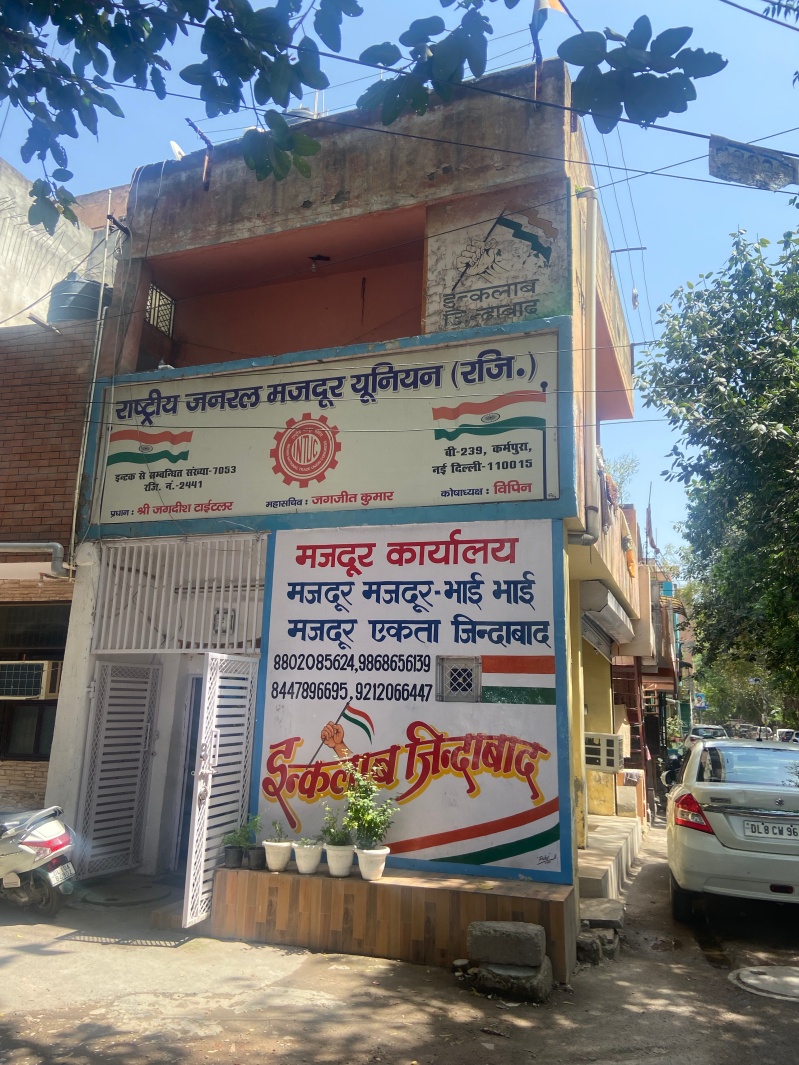‘At Home in Delhi’ is a five-part series exploring Delhi beyond its monumental architecture, taking a close look at the everyday structures that make the city unique. The series will delve into the history, design, and significance of the various buildings that make Delhi and how they reflect the cultural, social, and economic forces at play. Beginning with the age-old havelis, the series will move on to Art Deco homes, DDA housing, industrial housing, and lastly, modern housing.
Every year millions of Indians migrate from rural areas to cities in search of livelihood opportunities, and carry with them hopes and dreams of a better future. Arun Kumar’s family too is among them. It was in 1967 when Kumar’s family decided to move to Delhi from Bulandshahr in Uttar Pradesh to work in the industrial sector which promised a regular income.

“My father worked in DCM (Delhi Cloth Mills). I remember the time when the mill shut down – in the 2000s. But we were allowed to buy these flats from the government,” says 51-year-old Kumar, referring to the house in west Delhi’s Karampura area which was given to his father on lease by the Labour Department of the Delhi government.
Kumar drives an auto rickshaw and lives in this one-room flat with his wife and son. The tiny room has a refrigerator, a TV, and a bed. A few rolled mattresses are kept underneath the bed. At night, these mattresses are rolled out for the family of three to sleep. The house has a small backyard which is covered with a green fiberglass sheet. The space is used as a bathroom.
“Most people (living) in this lane came here when they were working in the mill, but now someone is a driver, someone a security guard. The houses are extremely small, although now we have a lot more equipment… It is tough. My kid wants another room now but what can we do,” says Kumar. There is despair in his voice.
Kumar’s words resonate with not only his neighbours but most informal sector workers who moved to the city years ago in the hope of improving the standard of living. There are an estimated 4.92 million informal workers in Delhi, comprising over 80 per cent of the city’s total workforce, and yet living on the margins. With ramshackle housing and inadequate social security, they are often left at the mercy of business owners or the constantly changing industrial policies.
The evolution of Delhi’s industrial areas
Delhi is home to several small and medium-scale industries such as readymade garments, paper and paper products, rubber and plastic products, electrical machinery, repair services, and automotive equipment among others. Since the 1950s, the national capital has witnessed a shift in its industrial policies, compelling industrial establishments and their workers to migrate to the city’s outskirts. This push to relocate industries has reshaped the urban landscape of Delhi creating a stark visual divide — the affluent high-rises on one hand and dilapidated and shabby industrial colonies on the other.
At Home in Delhi – I | The rise and decline of the havelis
At the time of Independence, there were two major industrial areas in Delhi — Okhla and Najafgarh. They primarily housed small and medium-scale industries, with shared physical infrastructure. The primary purpose of these estates was to incentivise entrepreneurs to engage in small-scale manufacturing and encourage collective association for efficient production systems. The fluid movement of labour from one company to another created a conducive environment for industries located nearby. By the 1960s, Delhi had the largest number of small-scale industries in the country.
 Karampura (Express Photo)
Karampura (Express Photo)
Recognising the need for more equipped industrial estates, decongestion of the city, and pollution control, authorities initiated a relocation order to facilitate the shifting of industries towards the border areas. This was reflected in the Master Plan for 1962 and the 1996 Supreme Court order which directed all polluting industries to be relocated to other towns. This led to the development of industrial areas in Patparganj, Bawana, Jhilmil, Narela, and Badli.
In her paper Migration and Informalisation: Underlying Processes, Sumangala Damodaran, Associate Professor at the School of Development Studies, Ambedkar University, divides the Industrial areas of Delhi into two broad categories — older industrial estates, established during the early phases of planning the city, and newer industrial estates that reflect the ‘cleaner and greener’ version of the city. The former had polluting industries that dealt with materials such as rubber, auto spare parts, iron smelting, fluorescent lights, etc, and were relocated in the late 1990s and early 2000s. The new industrial estates were planned for clean industries such as IT and IT-enabled Services (ITeS).
By 2015, Delhi had 28 planned industrial estates and four multi-storey factory complexes. Twenty-one of these are under Delhi Development Authority (DDA) and the remaining 11 are under the Delhi State Industrial and Infrastructure Development Corporation Ltd. (DSIIDC) and Department of Industries (DI). These industries along with other jobs in the informal sector attract a large number of migrants.
Life in the industrial estate of Karampura
Karampura falls under the larger Najafgarh Industrial Area and has residential, commercial, industrial, educational, and entertainment establishments.
Dr Rohit Negi, Director, Centre For Community Knowledge, Ambedkar University, says Karampura was once a thriving industrial area. “If we go back in time, by the 1970s, this area would have been a thriving industrial area. The largest was the Delhi Cloth and General Mills, established in 1889. The industries would need housing for the workers, and some larger ones, like DCM, would house the workers within their compounds. These compounds were like self-contained zones with production, housing, schooling, daily need stores, and even open ground for festivals.”
With the rise in the number of industries and the influx of migrant workers, demand for housing infrastructure increased and this gave birth to the Karampura housing complex, where flats were given to mill workers on rent and later on a long-term lease by the Labour Department of the Delhi Government.
At Home in Delhi II | Delhi’s every ‘just another old building’ could be an Art Deco gem
These were one-room flats with a kitchen and a shared bathroom for six units. In the late 1970s, workers were given the option to buy flats. Those who purchased these flats started investing in their upgrade and maintenance. By the 1990s, as the value of land appreciated, people started to fence off parts of the yard.
 Karampura (Express Photo)
Karampura (Express Photo)
By 2002 (following the 1996 order of the Supreme Court), industries shifted out and the Delhi Development Authority (DDA) used the land to build a district park. Private land belonging to the DCM was sold to real estate developer DLF.
By the 2000s, the neighbourhood character changed. New commercial activities such as car workshops and banquet halls came up, and the residents now included informal workers, small-scale entrepreneurs, and students. Common spaces were also privatised, and most families added rooms in the backyard. The only remnants of the area’s industrial past are the offices of labour unions such as the Rashtriya General Mazdoor Union.
“Till the mills were here, at least we were assured of a job nearby. But since the new shops and banquet halls have come up, there are no jobs for us. We don’t know English or computers. Most of us work in high-rises as domestic help. You can yourself see the difference between their houses and ours,” says 47-year-old Sunita as she talks about the difficulties faced by semi-skilled workers.
Living on the margins
Dr Tanya Chaudhary, Associate Fellow at Institute for Human Development, cites the example of Narela, an industrial cluster on Delhi’s border with Sonipat, to highlight the precarious conditions of the workers who live in a “perpetual cycle of precariousness, distress and displacement in a megacity”.
Narela was conceived as a place for industrial and population decentralisation in the 1962 Master Plan. But despite low land prices, industries did not relocate to Narela, leaving workers, who were allotted residential plots here as part of the resettlement drive, with a long and difficult commute. This significantly affected women, many of whom either had to give up their previous jobs or take up low-paying jobs nearby.
Chaudhary argues that the displacement of workers from the city center to the margins resulted from “elite middle-class activism, united with planning policies”.
Damodaran, meanwhile, talks about the contrast in the living conditions of the “old” and “new” industrial areas. Wazirpur, developed in 1966 under the second Master Plan for Delhi, is dominated by steel manufacturing units, most of them being informal. The area consists of dilapidated worker residences intertwined with industrial production spaces, resembling an “industrial basti”. However, workers still sometimes manage to own their jhuggis, indicating their “upward mobility”.
At Home in Delhi III | How DDA built the middle class dream and shaped modern Delhi
In Patparganj Industrial Area, established in the 1990s as one of the sites for relocation, the houses for workers are designed like dormitories with shared amenities in nearby urban villages such as Ghazipur. The workers remain at the mercy of landlords and without any hope of owning a house.
The changing skyline of the city
As the population increased and housing became an acute problem, the city turned to private real estate developers. Delhi’s Master Plan was modified in 2013 and height restrictions were liberalised, allowing developers to build high-rise residential projects, and forcing labourers to move to unauthorised settlements.
Most Read 1Chandrayaan-3 mission: Dawn breaks on Moon, all eyes on lander, rover to wake up 2As Indo-Canadian relations sour, anxiety grips Indian students, residents who wish to settle in Canada 3Karan Johar says Sanjay Leela Bhansali did not call him after Rocky Aur Rani: ‘He’s never called me but…’ 4Gadar 2 box office collection day 40: Hit by Shah Rukh Khan’s Jawan onslaught, Sunny Deol movie ends BO run with Rs 45 lakh earning 5Shubh’s tour in India cancelled: Why is the Canada-based singer facing the music?
Twenty-nine-year-old Rajiv who works in a logistics warehouse and lives in a rented room in Karampura with his family summarises the plight of workers. “I agree with you that there are no open spaces here for my children to play. You can also see how cramped this room is. But we have no option,” he says.
In his village, he has a big house with a large piece of agricultural land. But farming, he believes, isn’t a dependable source of income. “And when we work in Delhi, we get respect in the village. I send them photos of me in my uniform and they feel proud,” he says. “I hope we can move out of here one day and live in a house with a balcony”.
Also ReadThe many arguments for, and against, abortion rights How Lord Ganesha is celebrated outside IndiaKashmir when India got independence: Neither here nor thereHow Thakurs have dominated UP politics since Independence
Suggested readings:
Sharan Awadhendra, In the City, Out of Place: Nuisance, Pollution, and Dwelling in Delhi, c. 1850-2000 , Oxford, New Delhi 2014Chakravarty Surajit & Negi Rohit , Space, Planning and Everyday Contestations in Delhi, Springer New Delhi, 2016Chaudhary Tanya, Displacement and livelihood of industrial workers on the periphery of Delhi: Case study of workers in Narela Industrial Estate, Theleaflet.in, May 2022


